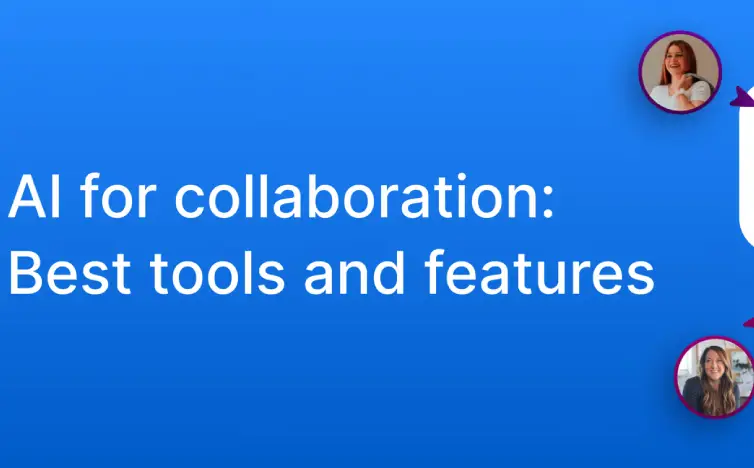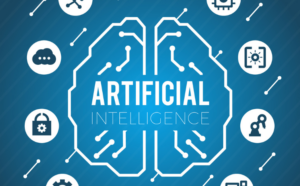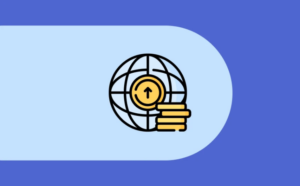As organizations adapt to the evolving world of work, the need for smarter, more efficient collaboration tools has never been greater. Artificial Intelligence is now playing a crucial role in transforming team communication and project management, making workflows smoother and more intuitive. AI-powered collaboration platforms are not just connecting people they’re empowering teams to work smarter by automating tasks, enhancing creativity, and providing real-time insights. In this blog, we’ll dive into the best AI collaboration tools that are redefining productivity and helping teams achieve more with less effort.
What Are AI Collaboration Tools?
AI collaboration tools are software platforms that help teams work together by using artificial intelligence (AI) to make tasks easier and faster. These tools not only let people communicate, share files, and manage projects, but they also use AI features like smart suggestions, automation, content generation, and data analysis. By adding AI, these tools improve productivity, reduce mistakes, and help teams make better decisions while collaborating.
What Are The Benefits Of Ai Collaboration Tools?
AI collaboration tools have different benefits:
Enhanced Productivity: AI automates repetitive tasks like scheduling, reminders, and data entry, freeing up time for more important work.
Improved Communication: Smart features such as real-time translation, transcription, and sentiment analysis make team interactions smoother and more effective.
Better Decision-Making: AI analyzes data and provides insights or recommendations to help teams make informed choices quickly.
Seamless Collaboration: These tools centralize communication, file sharing, and project management, allowing teams to work together effortlessly across locations and time zones.
Personalized Workflows: AI customizes task assignments, prioritizes notifications, and adapts interfaces to fit individual team members’ work styles.
Increased Creativity: AI-powered brainstorming assistants and content generation help teams develop ideas faster and overcome creative blocks.
Reduced Errors: Automation minimizes human mistakes in tasks like data entry, scheduling, or document versioning.
Scalability: AI tools easily grow with your team, handling increasing workloads and complexity without sacrificing efficiency.
Enhanced Security: Many AI collaboration platforms incorporate advanced security protocols and threat detection to protect sensitive data.
Top 8 AI Collaboration Tools in 2025
Notion
Notion is an all-in-one productivity and collaboration tool that helps teams and individuals organize their work. It combines features like note-taking, task management, wikis, project tracking, and databases in one workspace. With Notion AI, users can now generate content, summarize notes, brainstorm ideas, and automate workflows—making collaboration smarter and faster.
Features
- Autofill tables and turn lots of information into clear, easy-to-understand points.
- Ask Notion AI to help write messages and translate them into languages like Spanish or Japanese.
- Give Notion AI a main idea, and it will create a detailed email or document for you.
- Write, summarize, and translate text using built-in AI.
- Notes, tasks, calendars, and databases all in one tool.
- Work together in real-time with comments and task assignments.
- Create pages your way with drag-and-drop blocks.
Miro
Miro is an online whiteboard tool that helps people work together, even if they are in different places. It allows teams to share ideas, plan projects, and solve problems using a big digital board. You can add sticky notes, drawings, diagrams, and templates to make your work clear and organized. Miro is great for brainstorming, team meetings, and visual planning. It’s easy to use and helps teams stay connected and creative.
Miro Best Features
- Miro AI helps change rough ideas into things like user stories, diagrams, or code.
- You can create slides from mind maps or diagrams with just one click using Miro Assist.
- Miro can summarize and group important info from research or team meetings.
- It gives you a short summary of what was talked about during a whiteboard session.
- Automatically puts sticky notes into groups based on topic or keywords.
ClickUp
ClickUp is a project management and AI productivity tool designed to help individuals and teams stay organized, manage tasks, and boost efficiency.
Features
- Create, assign, and track tasks.
- Advanced tools that help teams work smoothly together and share information easily.
- Complete task management: Create, assign, track, and update tasks to keep projects on track.
- Lots of options to change workflows and views to fit what your team prefers.
- Quick updates to keep everyone informed about important changes.
- Charts and videos that clearly show how the project and team are doing.
- Track how much time is spent on each task.
- Set and track progress toward goals.
- Sync with your calendar to plan better.
- Store and share files within the platform.
- Fix grammar and spelling.
- Generate content suggestions.
- Create action items.
Google Workspace
Google Workspace is a set of cloud-based tools by Google that help people work and communicate online. It includes popular apps like Gmail, Google Docs, Sheets, Slides, Drive, Calendar, Meet, and more. Teams can use it to write documents, manage schedules, hold video meetings, and share files easily from anywhere.
Features
- Professional email with spam protection and smart replies.
- Create and edit text documents with others in real-time.
- Make and manage spreadsheets with smart functions.
- Design and share presentations easily.
- Store files in the cloud with safe sharing options.
- Schedule meetings, events, and get reminders.
- Do video and voice calls with screen sharing.
- Send direct messages or create chat rooms for teams.
- Manage users, security settings, and devices.
- Use all apps on Android and iOS devices.
- Autocomplete, grammar help, and smart search in Docs, Gmail, etc.
- Works well with tools like Zoom, Slack, Trello, etc.
- Edit Docs, Sheets, and Slides even without internet.
- See past changes and restore old versions of documents.
- Customize with extra tools from the Google Workspace Marketplace.
Microsoft Teams
Microsoft Teams is a collaboration tool by Microsoft that helps people chat, call, share files, and work together in one place. It’s often used by businesses, schools, and remote teams to stay connected and manage tasks. Teams is part of Microsoft 365 and works well with tools like Word, Excel, PowerPoint, and OneDrive.
Features
- Allows easy chatting with individuals and groups for quick communication.
- Supports high-quality voice and video calls, both one-on-one and group calls.
- Lets you create team channels for organized discussions by project or department.
- Enables sharing and real-time collaboration on files within the app.
- Integrates with Microsoft Office apps like Word, Excel, and PowerPoint for editing inside Teams.
- Syncs meetings and events with Outlook Calendar for easy scheduling and reminders.
- Sends customizable notifications to keep you updated without too many distractions.
- Allows secure guest access for external partners to join chats and meetings.
- Includes screen sharing and presentation tools for effective meetings.
- Offers live captions, transcripts, and summaries using AI to improve accessibility.
- Provides strong security features to protect data and privacy.
- Works on desktop, web, and mobile devices for flexible use anywhere.
- Supports many app integrations like Trello, Asana, and Zoom to add extra features.
Trello
Trello is a visual project management tool that helps individuals and teams organize tasks using boards, lists, and cards. It’s like a digital bulletin board where you can move tasks through different stages, making it easy to track progress. Trello is popular for its simplicity and flexibility, allowing users to customize workflows for anything from simple to-do lists to complex projects.
Features
- Use Atlassian Intelligence to help brainstorm content, campaign ideas, or ways to improve workflows.
- Automatically checks and corrects spelling and grammar for clearer communication.
- Let Trello’s AI pull out action steps, build checklists, or help you better understand what needs to be done.
- Visual boards, lists, and cards to organize tasks clearly.
- Drag-and-drop interface to move tasks between stages easily.
- Checklists, due dates, and labels to keep tasks detailed and organized.
- Attach files, comments, and links directly to cards.
- Collaboration with team members by assigning tasks and adding comments.
- Notifications and reminders to stay on track with deadlines.
- Integration with popular tools like Slack, Google Drive, and Calendar.
- Power-Ups (add-ons) to extend features like calendars, voting, and automation.
- Automation with Butler to reduce repetitive work and boost productivity.
Slack
Slack is a messaging and collaboration platform designed to help teams communicate easily and work together efficiently. It organizes conversations into channels based on projects, topics, or teams, making it simple to find information and keep discussions focused. Slack supports real-time messaging, file sharing, voice and video calls, and integrates with many other tools.
Featutres
- Only the right people and approved devices can access company data using single sign-on, domain claiming, and enterprise mobility management.
- Protect data with Slack Enterprise Key Management, audit logs, built-in data loss prevention, and support for other DLP tools.
- Slack AI reads your messages and gives useful insights, like your revenue for the last three months.
- Voice and video calls within the app.
- Easy file sharing with drag-and-drop support.
- Searchable message history to find past conversations quickly.
- Notifications you can customize to stay focused.
- Integrations with hundreds of apps like Google Drive, Zoom, and Trello.
- Ability to share and collaborate on documents and files.
Asana
Asana is a popular work management platform that helps teams collaborate, organize tasks, and track project progress easily. It is loved for its simple and user-friendly design, making it a great choice for managing both team projects and personal tasks in an organized way.
Asana is especially useful for remote and distributed teams, helping everyone stay connected and focused on their goals, no matter where they are working from. This helps boost productivity and teamwork in today’s fast-changing work environment.
Features
- Easily create, assign, and track tasks to keep everyone clear on what needs to be done.
- Organize work from small tasks to big projects, giving a complete view of everything going on.
- Communicate, share files, and track progress to help teams work better together.
- Available on iOS and Android, so you can manage work anytime, anywhere.
- Set which tasks need to be finished before others can start.
- Instantly create summaries, status updates, and progress reports from live project activity.
- Set up intelligent rules to automate tasks and connect with your other apps.
- Write better project and task descriptions with AI-powered writing help.
- Quickly build customized projects with the right tasks and fields based on your goals.
- Automatically repeat tasks on a regular schedule.
- Create timelines to plan and track project progress.
- Keep all tasks, conversations, and updates in one place.
Conclusion
The variety of work management software available today is vast, with each platform offering distinct features and benefits. Some specialize in automating routine tasks, while others focus on enhancing teamwork, customizable user experiences, or integration with other tools.
To improve productivity and project handling, it’s important to pick a solution that matches your team’s unique processes and requirements. Whether you need to manage simple daily tasks or coordinate complex projects, these tools provide essential features to keep your team organized, collaborative, and efficient. By choosing the right work management system, you can reshape your team’s workflow and achieve smoother, more successful outcomes.
Faqs
What are AI collaboration tools?
AI collaboration tools are software that helps teams work together using artificial intelligence to automate tasks, provide smart suggestions, and improve communication.
How do AI collaboration tools help teams?
They save time by automating repetitive work, improve accuracy, enhance creativity, and make it easier for teams to communicate and share information.
Can AI collaboration tools be used by any team?
Yes, teams of all sizes and industries can benefit from AI collaboration tools, whether for managing projects, communication, or document creation.
Are AI collaboration tools secure?
Most AI collaboration tools use strong security measures to protect your data, but it’s important to choose tools that follow industry standards and best practices.
Do I need technical skills to use AI collaboration tools?
No, most AI collaboration tools are designed to be user-friendly and require little to no technical knowledge.
Are AI collaboration tools expensive?
Pricing varies widely. Many tools offer free versions or trials, while paid plans often provide more advanced AI features and larger team support.
Will AI replace human jobs in collaboration?
AI tools are designed to assist and enhance human work, not replace it. They help teams focus on higher-value tasks by automating routine ones.




